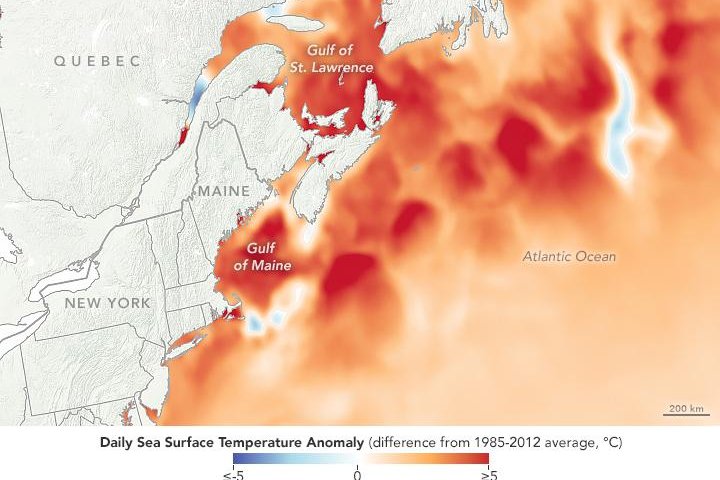New research suggests rapid warming across the North Atlantic Ocean is driving rising temperature along the Eastern Seaboard. Photo by NASA/Earth Observatory
Sept. 23 (UPI) -- The Northeastern United States is warming faster than other parts of the country, according to new research published Thursday in the journal Nature Climate Change.
Analysis conducted by climate scientists at the University of Massachusetts, Amherst, suggests shifts in ocean and atmospheric conditions across the North Atlantic have already fueled 2 degrees Celsius of summertime warming.
Researchers knew the Northeast was rapidly warming. They also knew ocean temperatures in the northwestern Atlantic Ocean were rising faster than other regions.
"I wanted to know if there was a link between these two trends, and if so, what that link is," lead author Ambarish Karmalkar, professor of geosciences and researcher at the Northeast Climate Adaptation Science Center at Amherst, said in a press release.
A close examination of temperature data collected over the last several decades showed warming along the Atlantic coast, from Delaware to Maine, is truly "exceptional."
"This warming is being driven both by equally rapid trends in the Atlantic Ocean and by changes in atmospheric circulation patterns," Karmalkar said.
Temperature data across the Northeast showed that both wintertime averages and summertime highs are rapidly rising.
Previous studies have revealed a link between the slowdown of the Atlantic Meridional Overturning Circulation and rising ocean temperatures.
AMOC describes the conveyor belt-like action the brings warm water from the tropics north to Greenland, where it sinks and drifts back southward.
While the pattern does bring warm water to the North Atlantic, it also promotes stability by ensuring ocean water is constantly refreshed. With AMOC slowing down, the ocean has become more stagnant, allowing regions to heat up more rapidly.
"One consequence of this conveyor belt slowdown is more heating of the ocean off the Northeastern coast, which helps to explain the spike in ocean temperatures in the Mid-Atlantic Bight and Gulf of Maine regions," said Karmalkar.
Researchers also identified changes in the North Atlantic Oscillation, a regional climate pattern that influences the strength of winds blowing from the U.S. across the Atlantic to Europe.
Over the last few decades, the NAO has adopted a pattern that amplifies the influence of ocean air on coastal weather patterns in the Northeast.
In other words, air above the warming North Atlantic is increasingly being swept toward the coasts of the Mid-Atlantic and New England.
The authors of the new paper suggest their findings are reminder of the idiosyncrasies of regional climate patterns. Different parts of the United States are going to experience climate change in different ways.
"Our research implies that without improved high-resolution data, regional climate assessments, which inform our ability to plan for the future, may underemphasize warming in this populous region," said Karmalkar.















